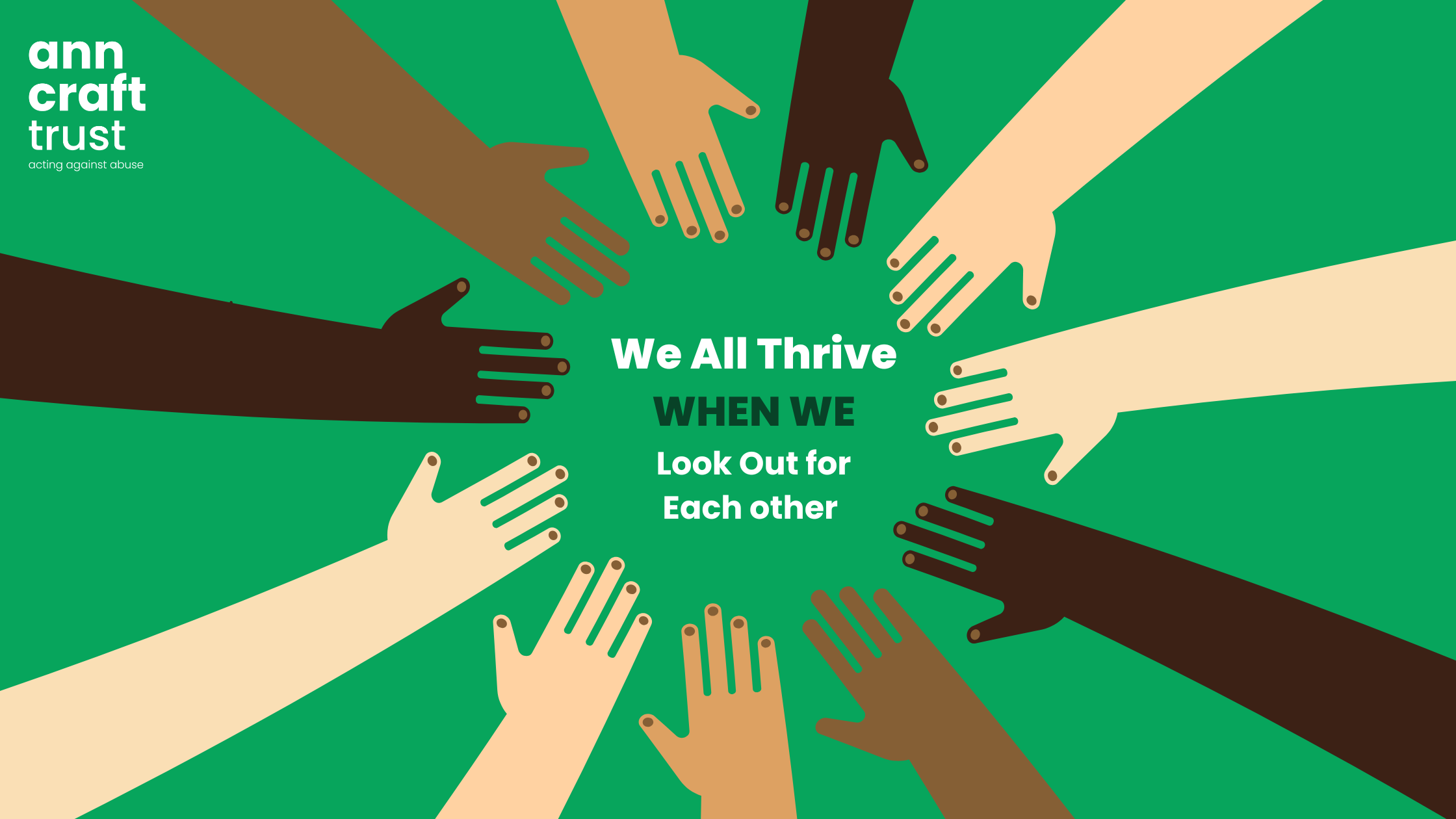
Kyle Kivaria, a second-year law student at the University of Nottingham, worked a placement at The Ann Craft Trust. At the end of her placement, we asked her to reflect on what she’d learned about safeguarding adults.
When I first stepped into the world of safeguarding, I thought it was simply about helping those in need offering a hand when someone was struggling.
But safeguarding is not just about reacting to obvious danger. It is about seeing before the fall, hearing before the cry for help, and understanding before words are even spoken.
Safeguarding is a responsibility, not just an act of kindness.
The Importance of Trust
One of the first lessons I learned was that safeguarding is built on trust.
Without trust, people remain silent. Without trust, the signs of abuse stay hidden beneath forced smiles and empty reassurances.
And trust is fragile. It’s not given freely, but earned through consistency, patience, and empathy.
To truly safeguard someone, you must create a space where they feel safe enough to be vulnerable. You must create a space where their voice carries weight, and where their pain is not dismissed as an exaggeration or inconvenience.
Spotting the Signs of Abuse
I also learned that safeguarding is not just about knowing what to do. It’s also about knowing what to look for.
Abuse does not always announce itself with bruises or loud cries. Sometimes, it lingers in hesitation, in sudden withdrawal, in the quiet loss of confidence.
Abuse can hide in plain sight—behind closed doors, within institutions, even in the middle of a conversation where someone says I’m fine, but their voice tells a different story.
Before this placement, I had never truly considered how many people I might have walked past, how many moments of silent suffering I had unknowingly ignored simply because I didn’t recognise the signs. Knowing what to do means little if you don’t first learn how to see.
Act On Your Instincts
But learning to see is not enough. There must also be action. And action is not always easy.
Safeguarding means stepping forward when it would be easier to stay silent. It means having difficult conversations, standing firm when others look away, and sometimes making choices that are uncomfortable but necessary. Because doing nothing is a choice too—a choice that can leave someone trapped in harm’s way.
One of the most profound lessons I learned was from the people around me. The team at the Ann Craft Trust does not just talk about safeguarding—they embody it. Their kindness is not performative, their empathy not selective. They live out the very principles they teach, proving that safeguarding is not just a responsibility within a workplace or an organisation; it is a mindset, a way of moving through the world with care and awareness.
Watching them made me reflect on my own life—on the kind of person I want to be. Do I extend the same patience and understanding in my own interactions? Do I create a space where people feel heard?
Safeguarding is not just about protecting others. It is about shaping yourself into someone who chooses to care, even when no one is watching.
What Do We Owe Each Other?
But perhaps the greatest lesson I’ve taken from this experience is the one that challenges a message we hear so often: You don’t owe anyone anything.
We live in a world that promotes independence to the point of isolation, where people convince themselves that they are only responsible for their own wellbeing.
But safeguarding stands in direct opposition to that mindset. It reminds us that we do, in fact, owe something to the people around us, to the communities we are part of, to the strangers whose struggles we may never fully understand. A healthy community is not just built on shared spaces, but also on shared responsibility.
At its core, safeguarding is not just about protection. It’s about our shared humanity and our duty to one another.
